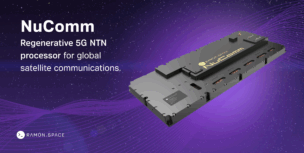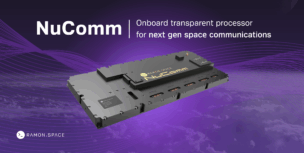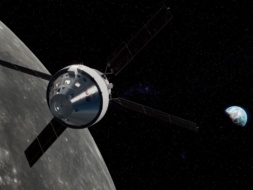In 2012, there were just over 1,000 active satellites in orbit. There are now 10,000, ~2,700 of which were deployed in the last 12 months. During the early days of the space economy, satellite operators could overlook spacecraft longevity and collision risk. This is no longer the case.
As the space economy matures, space sustainability has taken center stage, and stakeholders are developing new strategies and tech to enhance industry efficiency and foster growth.
Space Economy’s Next Era
In any economic market, growth produces unwanted byproducts, debris, and pollution. The more business activity, the more waste is created.
For the space industry, debris takes the form of defunct satellites, spent rocket bodies, and even flecks of paint.
Zombie birds: LEO satellites have relatively short lifespans and generally need to be replaced every three to five years. After a satellite becomes non-operational, it will often remain in orbit, representing significant economic risk and waste.
- Defunct LEO birds speed through orbit at 17,000 MPH—or 5 miles per second—posing collision risks.
The inefficiencies and dangers within this model limit growth in the industry.
The World Economic Forum and ESA released their orbital debris mitigation guidance last month. The proposal aims to foster a collaborative approach in addressing space sustainability, believing organized orbits will create a stronger ecosystem.
- While investing in a sustainable orbital economy will require a financial commitment from all stakeholders in the industry, the ROI from a sustainable economy stands to benefit everyone.
Space Sustainability ROI
Businesses. ULA chief Tory Bruno delved into how orbital debris poses a significant business risk in a recent blog post.
- Bruno detailed how each satellite has ~60 close approaches daily, representing just three to five seconds of travel time between objects.
- A collision in space could result in debris fragments flying off in various directions, triggering a potentially catastrophic cascade of effects throughout an operator’s constellation.
“Orbital debris has become something we must urgently deal with. It is not tomorrow’s problem,” said Bruno. Investing in orbital debris mitigation has become increasingly necessary to protect space assets.
Additionally, satellite services such as life extension, inspection, and refueling can maximize the utilization of expensive assets and juice ROI.
Investors. The WEF believes debris mitigation practices could spark significant business opportunities and entirely new markets for investors. Space sustainability creates a strong and continuous demand for debris removal and servicing businesses, similar to the stable demand for garbage collection, auto maintenance, and refueling/re-charging on Earth.
Insurance. Insurance companies succeed when accidents are minimized or absent. The WEF encourages insurance agencies to offer incentives for sustainable satellite practices, including inspection, maintenance, and safe deorbiting.
Governments. With thousands of state-owned satellites in orbit, governments have become inextricably tied to a sustainable LEO and GEO. Nations have noted a sense of responsibility in safeguarding their expensive, often defense-oriented assets.
“We’re not just providing capabilities. We’re actually having to think about security in this area of responsibility,” said Space Force Lt. Gen. John Shaw at this year’s Secure World Foundation’s Summit for Space Sustainability.
Satellite debris removal guidelines are currently not required by law.
- At the Secure World conference, some industry players said they believe voluntary guidelines are a good first step. Still, in the long run, government regulations will need to be implemented to tackle the growing problem, Payload reports.
Enter Astroscale
Astroscale, an on-orbit servicing company, is developing spacecraft for a variety of services, including orbital debris removal, in-space inspection and situational awareness, life extension, and refueling. The spacecraft are designed to dock magnetically or robotically, depending on client needs, and will be able to service active satellites and remove debris.
The company closed a $76M Series G round in February, bringing the total funds raised to date to $376M.
Next-gen inspection: After successfully demonstrating in-orbit rendezvous and magnetic docking in 2021 and 2022 with its ELSA-d mission, Astroscale will deploy its ADRAS-J satellite in 2023 to attempt the world’s first up-close, commercial inspection of large space debris, in a joint mission with JAXA. The mission entails flying around and taking imagery and measurements of a multi-ton upper-stage rocket body in LEO.
- This type of debris inspection has yet to be accomplished in the industry. If ADRAS-J is successful, it will mark a significant milestone in space sustainability. Astroscale is also competing for a follow-on mission to remove the debris.
- Astroscale is also exploring debris removal missions with ESA, the UK Space Agency, CNES, and private customers.
- The company is also developing life extension services for a 2025 launch and has an agreement with the US Space Force for satellite servicing R&D.
An inconvenient truth: The exponential growth of objects in orbit resembles other pollution graphs, such as the post-industrial revolution CO2 emissions or the Great Pacific garbage patch following the plastic containers boom in the second half of the 20th century. As we have learned with previous pollution crises, tackling the problem before it takes on an unmanageable snowball effect is a much easier task.
Balancing act: Industry stakeholders understand the significance of establishing an organized orbiting highway but cleaning up is never particularly fun. The key question remains the magnitude of financial commitment needed to execute orbital debris removal. Without a commitment from all stakeholders, the financial burden could be enough to risk throttling the growth of the industry as a whole.
Like in any industry, debris removal adds an incremental baseline cost to the ecosystem. However, financial investment is ultimately necessary to ensure the market’s growth over the long term.
Galactic stewardship: Sustainability in space extends beyond LEO. As humanity extends beyond Earth’s orbit to the Moon and Mars, we will have to ask ourselves whether we Earthlings will make picking up after ourselves a priority.
“Coordination and sustainable behavior by stakeholders in the space industry is necessary for achieving a safe, inclusive, and beneficial space environment for life on Earth,” the WEF wrote in its guideline report.




